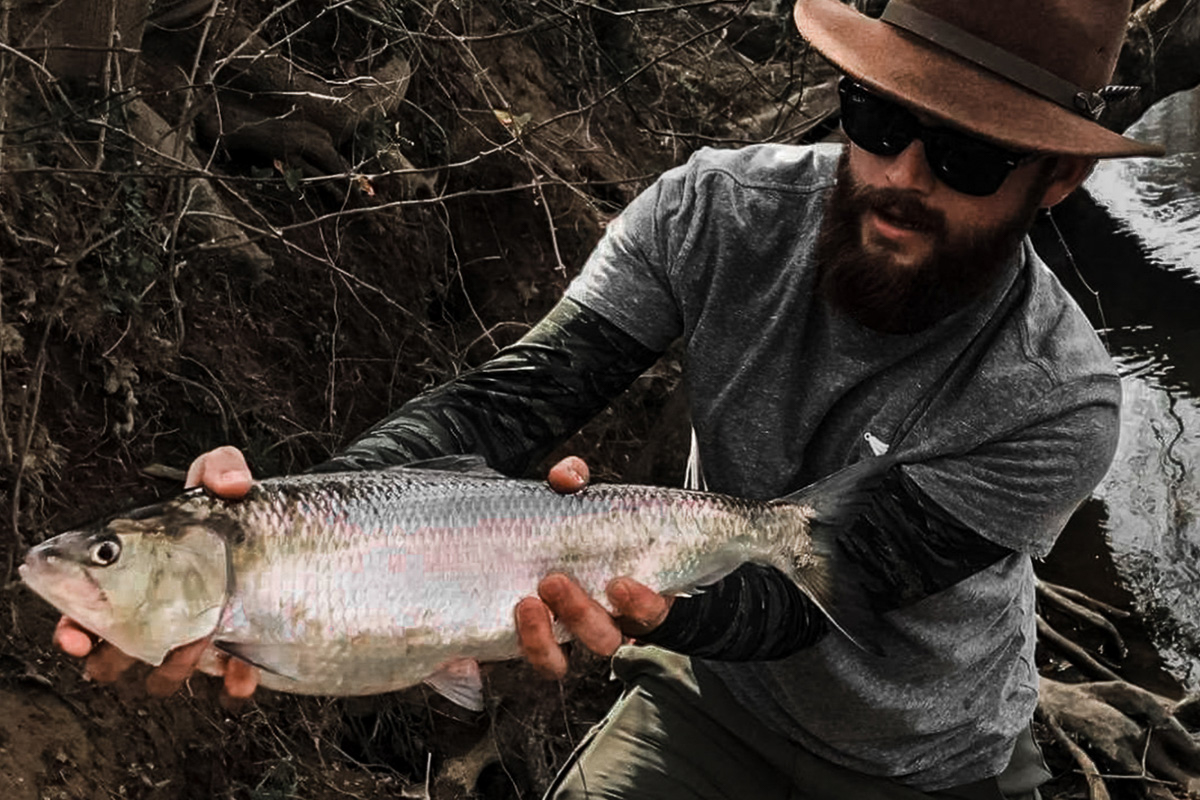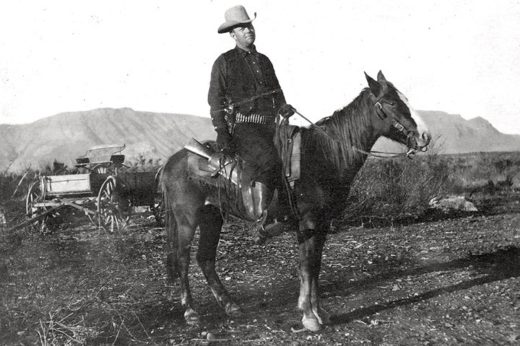Shad often lose the freshwater spotlight to trout, salmon, and largemouth bass, but there is no fish more American than the humble shad. The American shad (and its hickory and gizzard shad cousins) have long played a vital role in American history.
While shad are far too oily and bony to appeal to most modern palates, the fish were an essential part of the early North American diet. The sudden springtime surge of millions of spawning fish into coastal Atlantic rivers made the shad a staple food for North America’s inhabitants well into prehistory.
Early European colonists preserved these bony fish by salting them and brining them in barrels to help feed families through long winters.

Shad have fed generations of Americans, but these underappreciated fish may have played a pivotal role in our country’s war for independence. If it weren’t for the shad spawning season coming to the rescue of George Washington, himself an experienced shad fisherman, and his struggling troops at Valley Forge, we might be sipping tea and talking all British-like.
That’s exactly why Black Rifle Coffee’s newest limited roast, Beware the Delaware, has a badass depiction of our first president riding a gigantic Shad like it’s Artax.
GOOD GEAR – Enjoy Big Savings This Holiday That Would Make Nixon Proud
Riding the American Shad
Whether we owe our independence to the shad or not, there’s still plenty to love about this quintessentially American fish.
They earned the nickname “silver bullet,” fair and square. These streamlined rockets are seriously scrappy on the hook. They will dart, dive, and leap to dance across the water’s surface on their tails. They also use the current to their advantage, making the fight much more challenging than other fish of comparable size.
Pound for pound, you just can’t match the battle of the American shad, and there’s undoubtedly something pretty freakin’ American in their spunk.

It’s no wonder avid shad fisherman and Black Rifle Coffee Company illustrator Johnathan Griswold included a shad on the company’s newest ECS coffee bag. The new, limited-run roast, Beware the Delaware, pays tribute to George Washington and the shad.
“Obviously, George Washington didn’t literally ride on the back of a shad; it’s historically accurate in the sense that the shad played an important role in Washington’s life,” Griswold said.
Although Griswold, who hails from eastern North Carolina and fishes the shad run on the Tar River, admits he’s fascinated with American history, he’s also equally fascinated with hickory and American shad.
“The whole shad thing is kind of a personal touch,” Griswold said. “Shad fishing is a big thing in my family, and they are my favorite fish to fly fish.
“This time of year is my favorite time, from the beginning of February to late April. I’m on the river as much as I can be. I love shad because they come all the way from Nova Scotia and swim all the way back here, where they spawned. It’s pretty wild.”

RELATED – Angler Shoots Epic Vid of Breaching Whale Inches From Boat
The Shad Run
John McPhee calls shad the “eastern analog to salmon” in his book, The Founding Fish. Like salmon, shad are anadromous. They hatch in inland freshwater streams, then migrate to brackish water nurseries. Then they head to the open Atlantic Ocean, where adult American shad hang out for a few years before returning to their birthplace for some scaly romance.
The shad spawn occurs in early spring when water temperatures reach the mid-50s. The fish move upstream earlier in the South, with Carolina anglers hooking buck shad as early as mid-January. Northern rivers, like the Schuylkill in eastern Pennsylvania that runs through Philadelphia, don’t typically see shad until around the beginning of April. That’s where Washington’s troops were toughing out a cold, hard winter,

GOOD GEAR – Wear the Perfect Range-Day Shirt With the BRCC X Dixxon Tacticock Flannel
Washington’s Wintertime Woes
The winter of 1778 pretty much sucked for the Continental Army’s Commander in Chief, and it was even worse for the men under Washington’s command. While the British were partying it up in the City of Brotherly Love, Washington’s troops were embracing the suck of a cold, hard winter just a day’s march away at Valley Forge.
At Valley Forge, the patriot army experienced shortages of everything from basic clothing to life-saving medicine, and of course, food. The men slept in crude log huts, huddled under straw to keep warm, and subsisted on simple cakes made from water and weevil-infested flour. Tasty.
One-third of the soldiers didn’t even have shoes, and diseases like typhoid, dysentery, and influenza swept through the ranks, killing far more than the British had. Nearly 2,000 men died from exposure, disease, and starvation.
In short, Valley Forge was not a fun place.

Washington attempted to procure sufficient winter supplies for the men under his command, including making pleas to the newly formed Continental Congress and heads of state governments. However, supplies remained sporadic through the winter, and soldiers would often go several days without food.
RELATED – How To Choose the Best Fish Cleaning Table
The American Shad to the Rescue, Allegedly
While the patriots suffered with empty bellies and frozen feet, the American version of Jesus’ loaves and fishes miracle happened, kinda. Legend has it that an odd warm spell tricked the shad into an early spawn, sending the fish swarming up the Delaware River in Biblical proportions earlier than they should have.
Shad streamed into the Delaware River’s tributaries, including the Schuylkill, and to the Valley Forge encampment on its banks. Hungry soldiers waded knee-deep into the river, so the story goes, catching the spawning fish with their bare hands and scooping them up by the hundreds in makeshift nets.

“The famine completely ended,” wrote Harry Emerson Wildes in his 1938 book Valley Forge. “Countless thousands of fat shad, swimming up the Schuylkill to spawn, filled the river. So thick were the shad that, when the fish were cornered in the nets, a pole could not be thrust into the water without striking a fish. Thousands of the tasty, rich shad were netted at each haul.”
Wildes also described how the Continental Army caught the teeming shad until they were “thoroughly stuffed with fish, and in addition, hundreds of barrels of shad were salted down for future use. The lavish fish feast was a dramatic close to a long period of privation.”
GOOD GEAR – Launch Your Mornings Into Orbit With the BRCC Space Bear Roast
Truth or Tall Tale?
While miracle stories about the American Revolution make us feel warm and fuzzy, this one could be an exaggeration, at least regarding the timing of the run. Over a couple of hundred-plus years, the savior shad-run story has morphed into a larger-than-life myth, albeit one that has helped shape our national identity. Americans love tales of Divine providence intermingled with the earliest stories of America’s formation.
The rush of hickory and American shad up East Coast rivers happens annually. As sure as the sun sets each evening and rises again the following day, spawning shad most certainly crowded the waters of the Delaware and Schuylkill Rivers in the spring of 1778.

There’s also a better-than-average chance Washington posted camp at Valley Forge because it was a promising spot for shad fishing on the Schuylkill. After all, he was a commercial shad fisherman, taking advantage of the bountiful Potomac River shad fishery at his Mount Vernon estate. He would have known that shad tend to slow down and pile up on the inside bend of a river, making them easier to catch. There happens to be a sharp bend in the Schuylkill at Valley Forge.
However, McPhee points out that there is no documented evidence from the period of an unusually early shad run in 1778. But there’s still a good chance that the Continental Army dined on American shad before they broke camp in June.
An abundance of fresh shad on their normal schedule would have left them with full bellies and enough fish to salt and preserve as they pursued the British leaving Philadelphia. The food supply would have bolstered their bodies and spirits as they forced the King’s soldiers from the field at the Battle of Monmouth Court House in New Jersey later that month.
There’s also a good chance Wildes’ account of fish density during that year’s shad run is on point. Unfortunately, the shad population has shrunk due to overfishing, and what we now see each spring is a fraction of the swarming crowds that moved upstream during the late 1700s.
However, a modern angler in the right spot can catch them at the run’s height on every single cast, sometimes two at a time. There’s no more American way to spend a beautiful spring day.
READ NEXT – How To Make the Perfect Salmon Burger










Comments